The subject of safety in Colombia is probably one of the biggest questions when it comes to choosing a trip to Colombia. Often when you tell your friends and family that you’re going to Colombia, they give you a strange look and stereotypes of danger, drugs and violence rain down on you.
Take a deep breath! And get out your best arguments (you’ll find some here). We’ll help you do just that with this post on safety in Colombia.
Yes, Colombia has suffered a lot from its bad media image, yes Colombia has a troubled and violent past, yes the ongoing security situation is far from that of modern countries like England or Canada, but today it’s perfectly possible to travel safely in Colombia.
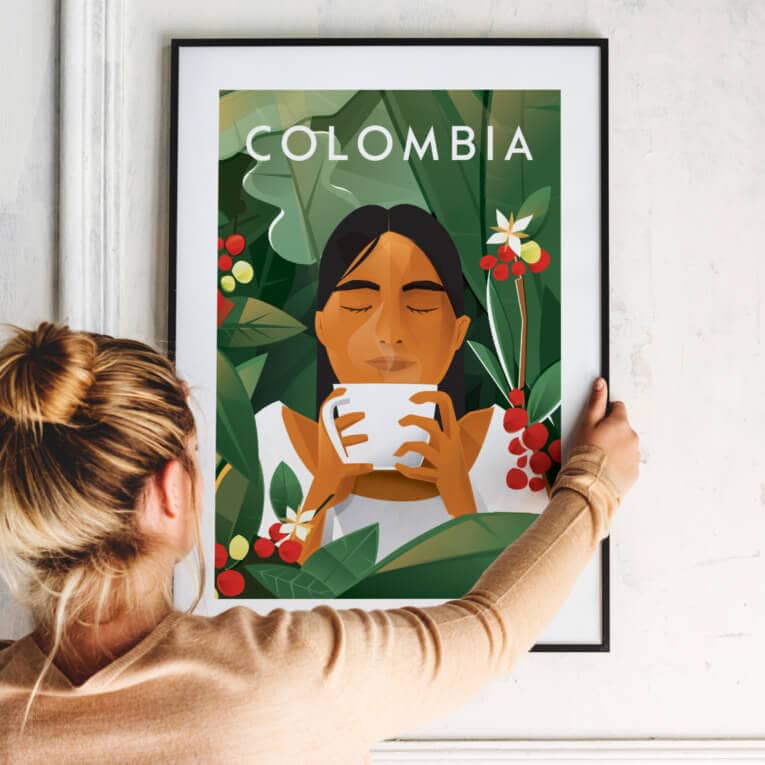
Travel Poster “Café de Colombia”
Buy our beautiful prints to get a taste of Colombia at home
Disclaimer: we apologize in advance for any grammatical or syntactic errors, as our native language is not English (we're a Colombian-French couple), so we hope you'll forgive us and still enjoy the information we share with you! Please note that all the information on our blog is based on our own experience, and is checked and updated regularly.
10 rules to travel safe in Colombia
Safety guide for a trip in Colombia

How should I behave?
Of course, we recommend that you follow the recommendations of your respective governments regarding travel to Colombia. That said, we can only advise you to combine these recommendations with field experience.
In any case, it’s essential to find out in advance what areas you should avoid, and to follow the advice of local Colombians.
In our opinion, in Colombia, nothing beats being accompanied by a local guide to avoid getting into dangerous situations.
TRAVELER TESTIMONIALS
Is it dangerous to travel in Colombia?
We’ve compiled a series of traveler testimonials to answer this question, which many travelers ask themselves.
Travel insurance
Between health risks, possible luggage worries and all the changes we’ve experienced linked to Covid, we recommend that you take out travel insurance to offset the various problems that could arise during your trip to Colombia. Here are the three types of insurance we recommend.
10 rules for a safe trip in Colombia
Here are 10 safety rules to enjoy Colombia, rules that are valid in every country in the world:
- Don’t show off your money.
Clothes, jewelry, accessories, high tech… keep a low profile and avoid showing off your outward signs of wealth. - Take only the essentials.
In particular, avoid walking around with all your money on you.. - Make a photocopy of your passport.
And keep your papers and valuables in the hotel safe, if there is one, or out of sight.. - Avoid carrying cell phones and cameras.
This advice is particularly valid in large cities. For our part, we always ask the locals what they think. You’ll find that in the countryside, in villages, even in some parts of cities, it’s often no problem to carry around a camera slung over your shoulder, but in other places it’s better to be careful. - Avoid walking alone at night in big cities.
If you want to go out, take a cab to a specific place. If you want to go for a walk, stick to busy streets, stay in groups, be vigilant and choose the early evening rather than the late evening. If you follow these rules, there’s no need to worry too much! - When traveling by bus, be careful with your belongings.
Keep your backpack under your feet, for example. We’ve never had any problems, but then again, prevention is better than cure. - Always take an official cab or one available via an app.
It must have an official plate with a number and the meter running; if it doesn’t, get out of the vehicle. It’s better to order a cab by phone (ask someone to do it for you). In the country’s main cities, you can also use mobile applications (Cabify or Uber). - Avoid high-risk areas
Armed groups linked to drug trafficking are present in various parts of Colombia, generally all border areas and certain hard-to-reach forested areas where, on the face of it, you have no reason to go. You can use the maps of your respective governments or the advice of locals to find out which areas are at risk. - Avoid using street ATMs in big cities
Cash dispensers inside supermarkets or banks are preferable to those on the street. - If you are mugged, don’t resist.
Give away everything you’ve got – it’s just material things that will never be worth putting your life at risk.
THE TWO MOST IMPORTANT TIPS
1.Don’t put yourself in a vulnerable position
“Dar papaya” is a purely Colombian expression for “putting yourself in a vulnerable position“. In other words, “No dar papaya” means avoiding being an easy target… From this stems responsible behavior, in terms of the way you travel, the places you visit and the external signs of wealth you wear. This is sad because we shoul never worry about that anywhere in the world but this is sadly how the world works.
2.Ask the locals for advice
Locals will give you good advice on areas to avoid, and good behavior to adopt. The kindness of Colombians is well known, and they’ll be more than happy to help and inform you. So don’t hesitate! The person at the front desk of your accommodation, if Colombian, is the ideal person to ask any questions you may have.
Safety in Colombia
Security guide for a trip in Colombia
The purpose of this post is not to deny the problems of violence and delinquency in Colombia . Between the violence linked to drug trafficking and the latent armed conflict despite the 2016 peace accords, certain regions of Colombia are particularly to be avoided.
A violent country
Colombia has one of the highest homicide rates in the world (25 per 100.000 individuals in 2019).
This figure must of course be put into perspective. First of all, compared with the rates in countries like England (1 per 100.000) or Canada (2 per 100.000), it’s clear just how violent a country Colombia is. USA in comparison has a 7 per 100.000 homicide rate.
But it’s also important to remember that Colombia’s homicide rate has been falling steadily since the early 1990s. (From more than 80 to less than 30 per 100.000). So it’s very encouraging!

With the covid crisis, by 2021 there will be an increase in delinquency in Colombia. This makes it all the more important to behave responsibly when traveling in Colombia.
Safe tourist areas
Despite all these figures, there’s no denying that Colombia is an increasingly accessible country for tourists, as evidenced by the record number of visitors in 2019, with over 3.5 million foreign tourists visiting Colombia.
The country is now presented as a destination with exceptional potential. And we can assure you that it’s possible to travel safely, provided you observe certain rules, of course.
The most popular tourist areas are also the safest outside the big cities. Of course, it’s always advisable to behave responsibly in order to enjoy your trip, but you shouldn’t fall into psychosis.
Outside the big cities, where precautions are always necessary, rural tourist areas are for us the most tranquil places in Colombia.
What the foreign governments say
Safety guide for a trip in Colombia

Many of you have asked us what we think of a particular colombian region after visiting your national government travel advisories.
We need to be able to include exceptions, details, asterisks and clarifications, because very often it’s more a question of a precautionary principle taken to the extreme than a fine-tuned, balanced vision of the real situation of travel in Colombia.
To see for yourself, it is interesting to compare the french and the british map of Colombia with their advices.
US RECOMMENDATIONS
If you check the US government travel information about Colombia, you just don’t go. So there is not much to comment.
Difference in treatment
Looking at how other countries treat the “Colombian case” we can see the enormous differences. For example in our two maps, while the French government place around 2/3 of the country in “inadvisable” or “inadvisable except for imperative reasons”, the British government place around 2/3 of the country in green with travel advice, and only around 1/3 in “inadvisable except for imperative reasons”.
When you know the regions concerned, you realize that the British government’s analysis is more detailed, showing which areas to avoid, but also showing which are “islands of safety” within those areas.
For example, the British map does not show the entire department of Norte Santander in orange, but only the part close to the Catatumbo, which shows Playa de Belen in green. The same applies to Capurgana in Uraba, Caño Cristales in Meta and San Jose del Guaviare.
Finally, when you visit the British government website and read their Travel advice, you’ll also realize that the advices given by the British are particularly pertinent.
Border crossings in Colombia
Safety guide for a trip in Colombia
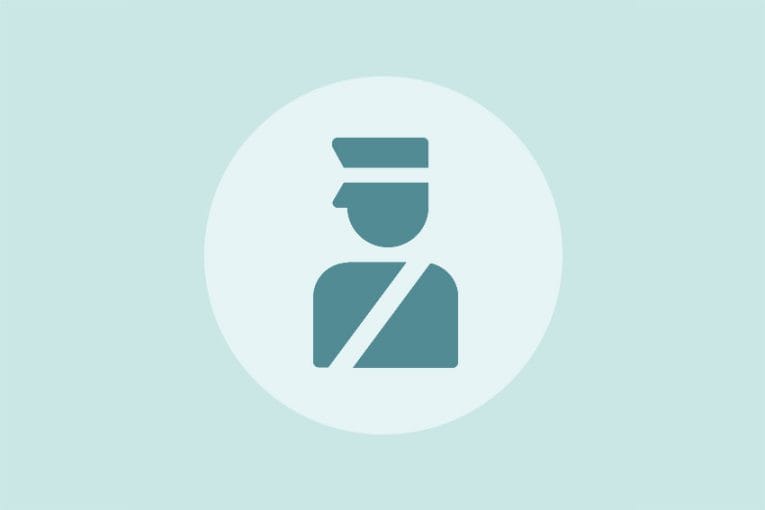
When it comes to safety in Colombia, border crossings are among the most sensitive areas. It is often in these areas that armed groups linked to organized crime congregate. While there are some strictly inadvisable zones, it is possible to cross Colombia’s borders in complete safety at certain points.
Border with the equator
This is the best-known and most frequented border crossing for travellers. It is the main point of entry and exit for those traveling throughout Latin America.
By plane
Low-cost carriers Viva Air and Wingo offer attractive fares on flights from Quito <-> Colombia’s main airports (Bogota, Cali, Medellín, Cartagena). Traditional airlines Latam and Avianca also offer flights to/from Ecuador.
By bus
The corridor between Tulcan and Ipiales is the only totally secure crossing and is used daily by thousands of travellers.
Due to the presence of numerous armed groups, it is totally inadvisable to attempt to cross the border from any other area.
Border with Panama
Many of you have asked us about crossing the border with Panama. Crossing the border by road is impossible, as the Pan-American Highway comes to a screeching halt as you approach the impenetrable and impassable Darién jungle.
Crossing the jungle on foot is totally inadvisable. The Darien forest is a territory held by paramilitary groups linked to drug trafficking.
For some years now, many foreign migrants (many Haitians and Africans) have been attempting to cross the border to Panama and continue their journey to the USA.
In 2021, the situation has worsened, with large numbers of migrants waiting their turn in both Necocli and Capurgana, creating a real health and humanitarian problem. The phenomenon has led to an increase in the number of Colombian smugglers linked to paramilitary groups in the region.
To cross from Colombia to Panama and vice-versa, there are two safe options:
By plane
Low-cost airlines Viva Air and Wingo offer attractive fares on flights from Panama City <-> Colombia’s main airports (Bogota, Cali, Medellín, Cartagena). Traditional airlines Latam and Avianca also offer flights to/from Panama.
By boat
Several options for crossing the Colombia <-> Panama border:
- Cartagena Cruise <-> Panama
- Lancha Capurgana/Spazurro <-> Puerto Obaldia (flight Puerto Obaldia <-> Panama City)
- Cruise via the San Blas Islands from Cartagena or Capurgana/Sapzurro
Border with Brazil
The border between Colombia and Brazil is in the middle of the Amazon rainforest. There are two safe solutions: a flight from Bogotá to Brazil’s major airports, or an adventure on the Amazon River.
By plane
From Bogotá airport, all the major Brazilian airports are served by the major airlines.
By boat
This is the ultimate adventure in safe border crossing. Ask us in Leticia about the possibilities of this experience on the Amazon River between the cities of Leticia in Colombia and Manaus in Brazil. You can expect to spend several days “cruising” the river.
Border with Peru
Here again, the border is in the middle of the Amazon rainforest, and the possibilities are the same as for crossing the border with Brazil.
By plane
Low-cost carrier Viva Air offers flights from Bogotá to Cusco and Lima. Otherwise, all Peru’s main airports are served by major airlines.
By boat
Another great adventure is to cross the border by boat on the Amazon River between Leticia and Iquitos in Peru. Here too, you should ask in Leticia about possible “cruises”.
Border with Venezuela
In recent years, with the crisis in Venezuela, millions of Venezuelans have been crossing the border into Colombia on a daily basis. This situation is akin to mass migration, with refugee camps, smugglers, racketeering and human queues on the roads to the border… For these reasons, it is simply not advisable to cross the border between Colombia and Venezuela.
Lost or stolen documents in Colombia
Safety guide for a trip in Colombia
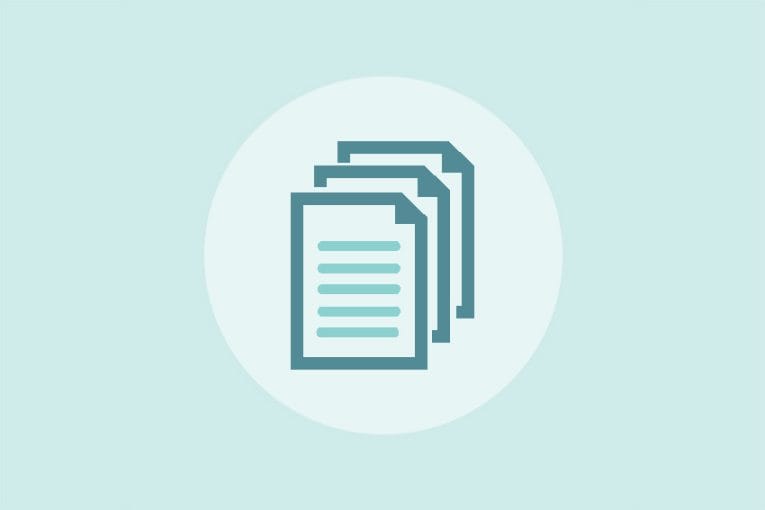
If there’s one thing that can happen to you on a trip, it’s losing something or having it stolen. Tourists are perfect targets for thieves, and this is not specifically a security problem in Colombia – it can happen in any country.
If it happens to you, you’re going to feel lost, not knowing what to do. The first piece of advice: don’t panic! In Colombia, as elsewhere, there’s always a solution to this type of problem. It all depends on the extent of the damage.
I’d say there are two types of situation: either the stolen or lost object is essential to your trip (THE PASSEPOOOOOORT !!!!!!) or it isn’t (the iPad).
PREVENTION
To avoid the inconvenience of losing or stealing your passport (or ID), the advise is: carry it with you only if absolutely necessary, and keep a separate photocopy of both sides, or better still, scan it and send it by e-mail to your own address.
My passport/identity card has been stolen
- The first thing to do is to report the theft or loss to the local authorities.
This will prevent fraudulent use of your identity documents. On my last trip, I lost my wallet… so I can tell you exactly what to do, since I got the information directly from a policeman in Barranquilla.
Go to the Colombian police’s document loss declaration web site. Note that it’s in Spanish only, but relatively simple to fill in. At the end of the process, you save the declaration and keep it by sending it to yourself by e-mail.
- The second thing to do is call your embassy in Colombia
The consulate will tell you what you need to do to obtain a replacement identity document. This is where the famous scan of your passport will come in very handy to facilitate the renewal application.
In an emergency, the embassy should help you with a “laissez-passer” valid only for your return to your home, or an emergency passport valid for one year if you need to travel to another country.
US Embassy in Colombia
+57 (601) 275 2000
Canadian Embassy in Colombia
+57 (601) 657 9800
British Embassy in Colombia
+57 (601) 326 8300
Australian Embassy in Colombia
+57 (601) 657 8030
I’ve lost or had stolen something material (iphone, computer, etc.)
In this case, you’ll have to pray that you’ve taken out insurance to cover material goods lost or stolen while traveling. Assuming you’ve been far-sighted enough to take out travel insurance, then the first thing to do is to contact your insurance company to find out what steps you need to take to receive compensation.
If you don’t have insurance, then you’ll be left with nothing but tears in your eyes..
Our advice: climb a small green hill at sunset and meditate on the meaning of life.
Travel insurance
In the event of loss or theft, travel insurance is clearly an additional asset in solving problems. Depending on the contract you choose, some offer coverage for material goods, but also help with identity papers and means of payment. Here are the three travel insurances we recommend.
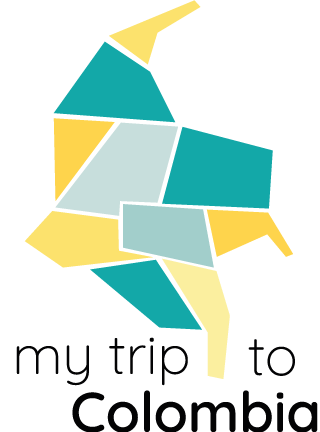
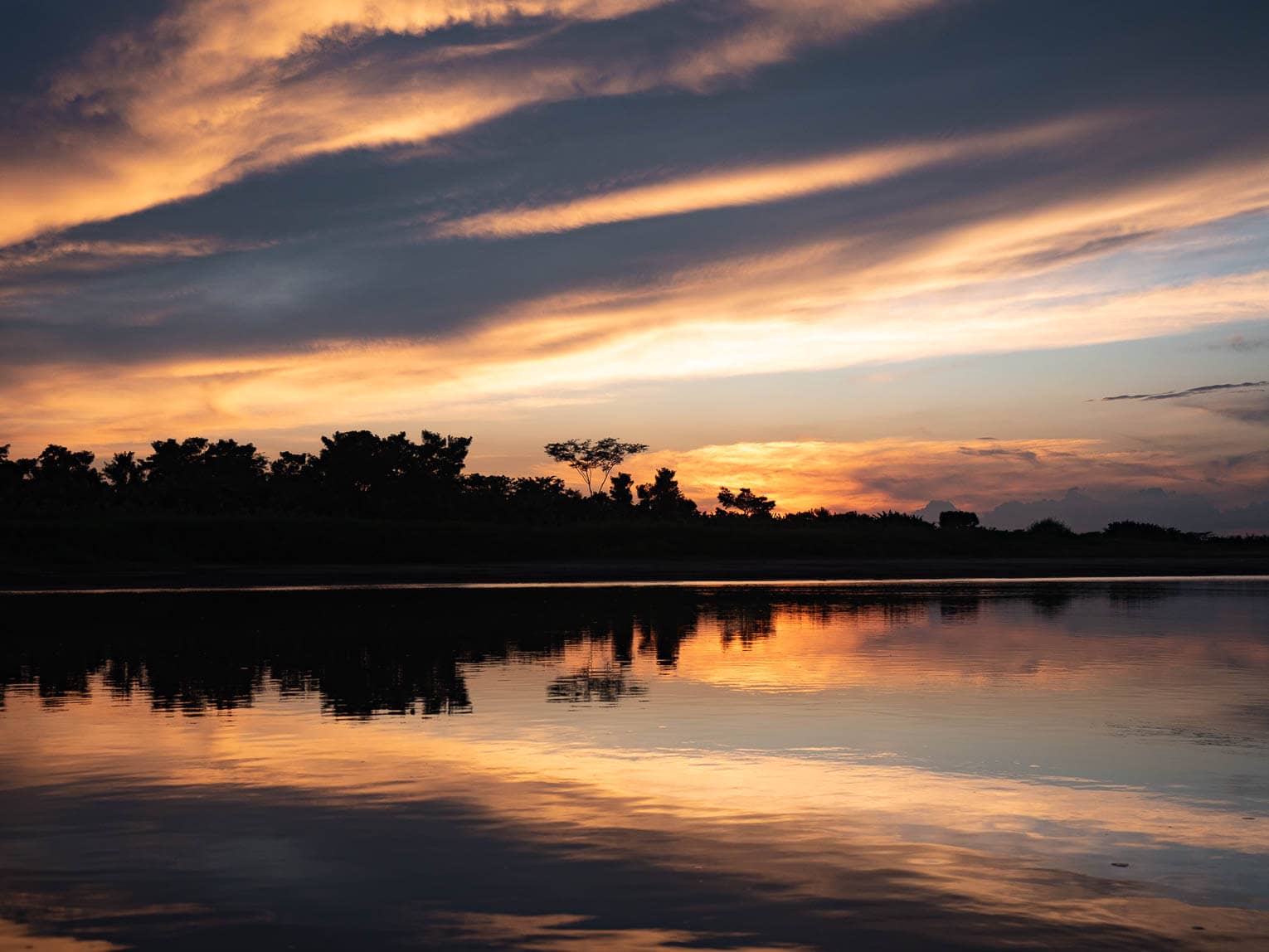
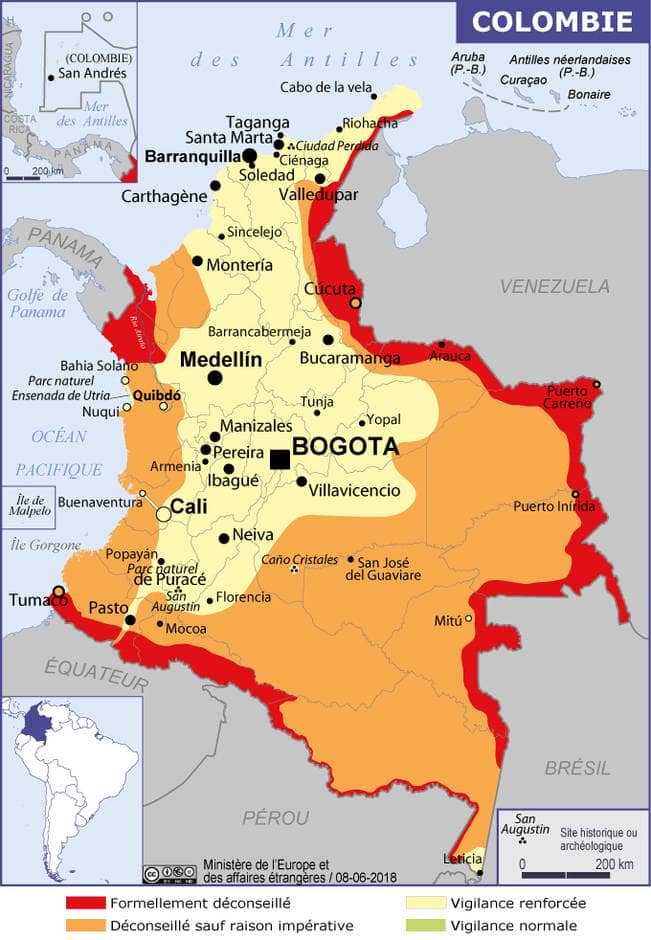
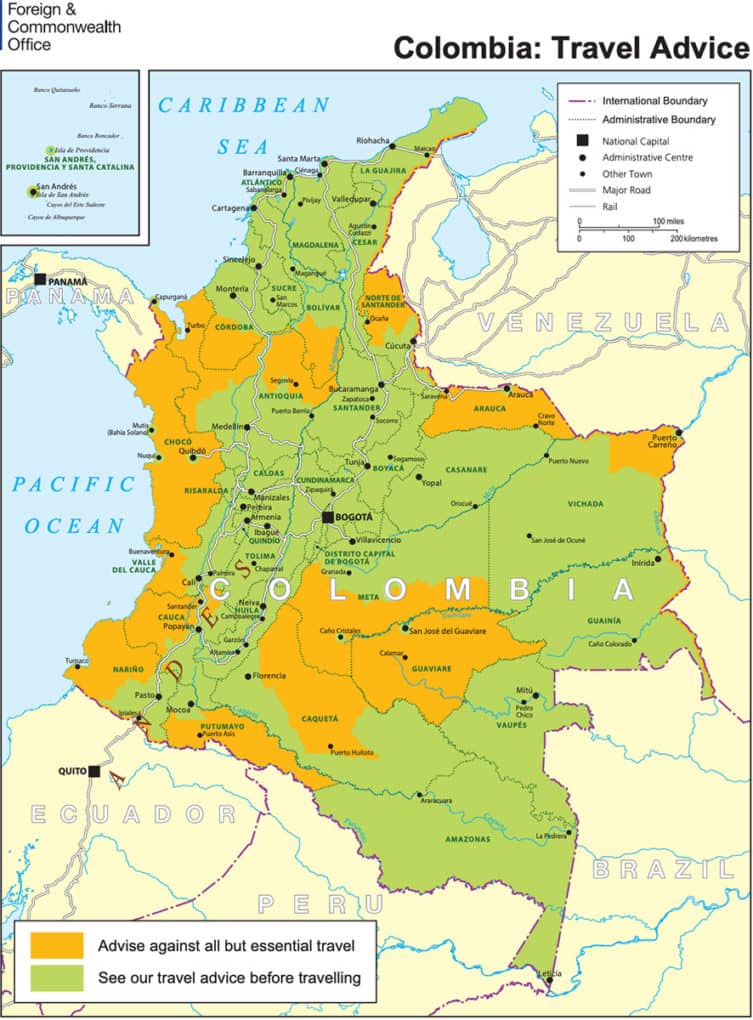
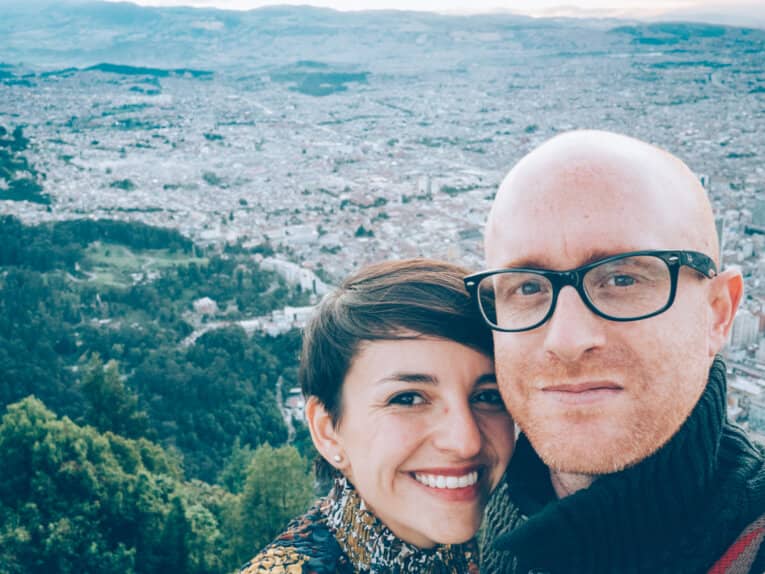
Hello, thank you for your reply which fully satisfies me. I will of course follow your wise advice and go via Ipiales. I’ll reach MOCOA via San Juan de Pasto.
Thanks again and bravo for your site.
Hello, thank you for your well-structured information. For me the solo approach of this country will be made except to go up the slopes in dancer sat on the saddle of my bicycle between Quito and MEDELLÍN one month between October November 19. I’d like to pass through MOCOA, which is classified as a red zone by the French government, so I’m hesitating. Is this color justified in your opinion? If not, what could be the alternative route to avoid the busy roads?
Thank you Serge.
Hi Serge, complicated subject, the only recommended and safe place to cross the border is via Ipiales. There are armed groups (dissident Farc, paramilitaries, narcotraffickers) present in other sectors of the border with Ecuador, notably in the lower Putumayo, San Miguel and Orito sectors… right on the border leading to Mocoa… As far as Mocoa itself is concerned, we don’t think there are any particular dangers. We’re planning to go there on our next trip to discover a bit of Putumayo, but we’ll be going with an agency that knows the area well. But to cross the border, all the more so alone and by bike, we really advise you to take the secure route via Ipiales, even if we understand that it’s not ideal…
For my part, I reached Ecuador via San Miguel and the puente international. I took a bus from Mocoa to La Hormiga. Then I had to take another bus to the Puente Internationale. This border is still little used, as there’s no state presence on the Colombian side. There are lots of roadblocks where you have to pay a few pesos to cross (the driver takes care of it). Sometimes children try to open the bus windows to throw water. When crossing the bridge on foot, it’s best to go in a group with the Colombians and carry a few pesos to give at the last roadblocks. Arriving in Ecuador is much quieter. The papers are checked a few kilometers after the border. The immigration office is almost deserted at Christmas time. Then take a bus to Lago Agrario. From there, you can get to any city in the country.
Hi Guillaume, we totally advise against crossing the border anywhere other than Ipiales. The border area south of Mocoa where you crossed is currently totally in the hands of armed groups and narcotraffic. Your experience is there, but to follow your example would be very bad advice to give to travelers. We’re the first to promote Colombia as a safe place to travel, we’re the first to encourage travellers to go to supposedly uninhabitable regions when they are, we want to change the country’s image, etc. We’ll go and visit Mocoa and we’ll see what happens. We’ll be happy to visit Mocoa and the accessible areas of the Putumayo. But there are limits to be respected as tourists, and for us, border crossings are clearly one of them. When you know the situation of this border zone, and what happens there, you can’t advise travellers to venture there.
Wow, that’s really inspiring. I hadn’t necessarily put Colombia on my list, but now I’m hesitating..
I did read the “Safety” section, but what do you think of a girl traveling alone in Colombia?
Hi Amandine, we have lots of testimonials from girls travelling alone in Colombia without any problems, you can come and discuss the subject on our Facebook group: https://www.facebook.com/groups/MonVoyageEnColombie/
If every blog was written in the same way for every country, we wouldn’t need to buy guidebooks!
Thank you so much for sharing this beautiful story
There you go! That’s a pleasure! 😀 Thank you very much! and it gives us the motivation to keep on giving quality content 😉
Your blog is simply extraordinary and complete!
We arrive tomorrow in Colombia 🇨🇴
Thank you
Thank you so much Ludo, we’re so pleased! 😀 Enjoy your trip to Colombia!
Hello,
on the insurance side, if you have a Mastercard gold, you may be reimbursed for certain things (e.g. passport renewal)
and you should also check with your home insurance company. In my case, after a theft in Peru, I was reimbursed for my phone, camera, and lock change at home… of course there’s a discount for obsolescence, but of course you have to list the stolen items in the police report and keep the invoices
i’m very happy to have discovered your (very good) site. I’m still browsing it, as I’m planning a 3-month trip at the end of the year, part of which will be in Ecuador.
Hello, Thank you for your comment and for sharing your experience! Thank you also for your appreciation of our blog, it gives us great pleasure and encourages us to continue 🙂